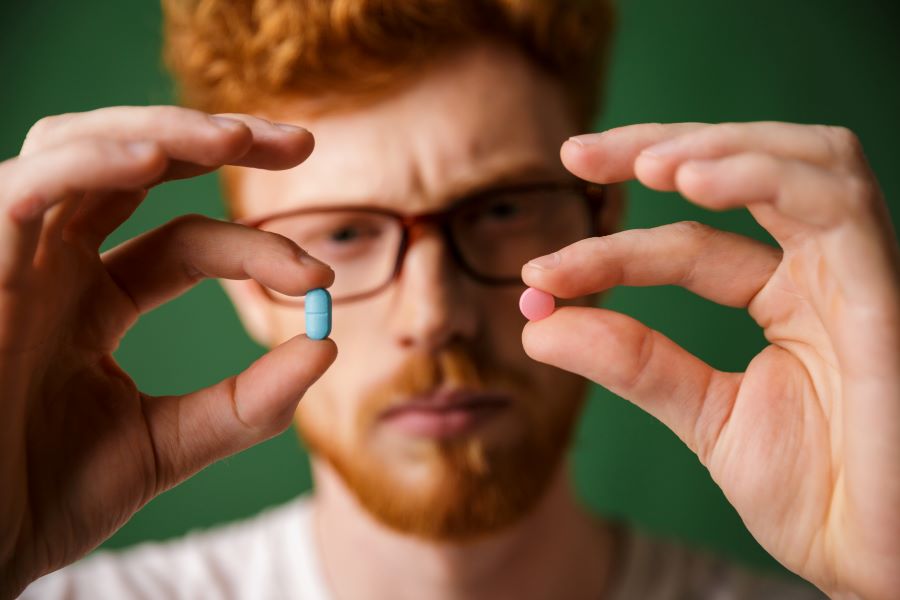
How to Save Money on Prescriptions
For anyone that attempts to stay on budget every month and doesn’t have huge monetary resources, it does not come as a surprise that prescription drugs can be expensive to purchase at your local pharmacy. The good news is that understanding why drugs cost so much can help us find ways to save money. Major portion of the price of new drugs comes from research costs that can be significant before obtaining regulatory approvals for new medications. Complex distribution network that includes wholesalers, pharmacies, and insurance companies can further contribute to raising costs and making prices unaffordable.
Fortunately many medications have generic versions available, which are significantly cheaper. Generics contain the same active ingredients as their brand-name counterparts and are typically sold at a lower price. FDA can approve generic drugs after patent and other periods of exclusivity are resolved, which means that many years usually pass before generic drugs are on the market.
Importance of Shopping Around
When it comes to purchasing prescription medications, shopping for best price is crucial if you want to save money. By comparing prices, you can identify the most affordable options available. Use online tools and websites to help simplify this process by providing information on drug prices from various pharmacies in your area.
Dont overlook checking different types of pharmacies, such as large chain pharmacies, independent pharmacies, and even online pharmacies. Each may offer different pricing structures and discounts.
Variations in Pricing
Pharmacies have the discretion to set their own prices for prescription medications which can vary from day to day. As a result, the cost of the same drug can differ significantly from one pharmacy to another. This variation is because of the pharmacy’s overhead costs, purchasing agreements with drug manufacturers, and individual pricing strategies.
Online Tools and Websites
Comparing prescription drug prices has become easier than ever. Numerous online tools and websites have user-friendly interfaces that enable you to enter the name of your medication and your location. You get a list of pharmacies with their corresponding prices for the medication. That empowers you to make an informed decision based on the most affordable options available.
Different Types of Pharmacies
When shopping around, don’t hesitate to explore different types of pharmacies. Each one may offer different pricing structures and discounts, allowing you to find the best deal for your specific needs. Here are a few types of pharmacies to consider:
Large Chain Pharmacies: Large chain pharmacies, such as CVS, Walgreens, or Rite Aid or Kroger branded are providing convenience and accessibility. But you need to ask about discounts, rewards programs, or savings clubs which can help reduce costs.
Independent Pharmacies: Independent pharmacies are smaller, locally owned businesses. These pharmacies often provide personalized service and may be more willing to work with you to find cost-saving solutions. Independent pharmacies may have lower overhead costs, in many cases allowing them to offer competitive, read lower prices.
Online Pharmacies: Online pharmacies have gained popularity in recent years due to their convenience as one click stop for prescriptions and potential cost savings. These pharmacies deliver medications directly to your doorstep. Online pharmacies often offer competitive pricing and may provide discounts or promotions as brick and mortar pharmacies. One company that stands out is Cost Plus Drugs because of low pricing structure. Only drawback is limited selection of prescription drugs, however new drugs are added daily making it a viable alternative.
Consider every type of pharmacy and you can widen your options and potentially find better deals on your prescription medications.
Quality and Reliability
As price is an important factor to most shoppers, it is crucial to consider quality and reliability of the pharmacy when shopping around. When dealing with medications, if you require brand-name drugs, look for genuine products if that is of utmost importance.
Researching the reputation and credentials of a pharmacy is vital in ensuring that you receive safe and effective medications. Look for well-established pharmacies, read customer reviews, and consult with your healthcare provider or pharmacist for recommendations.
Other Considerations
When shopping around, keep those considerations in mind:
Prescription Transfers: Some pharmacies offer incentives for transferring your prescriptions to their location. These incentives may include discounts, gift cards, or other rewards. Before switching pharmacies, inquire about transfer offers that are available.
Pharmacy Loyalty Programs: Pharmacies often have loyalty programs that provide additional savings and benefits. These programs may offer discounts on prescription medications, rewards points, or exclusive promotions. By enrolling in these programs, you can obtain ongoing cost savings.
Generic Medications: As mentioned earlier, considering generic alternatives can lead to significant cost savings. Compare the prices of both brand-name and generic versions of your medication. In most cases, you will find generic options are much more affordable without compromising quality. And should you not be happy with generic product, you can switch back to name brand.
Shopping for prescription medications is a valuable strategy that can result in substantial cost savings. By exploring different types of pharmacies, you can purchase your medications where price is right.
Utilizing online tools and websites, researching pharmacy loyalty programs, and considering generic alternatives are all essential steps in the shopping around process. Stay proactive and take time to find the best deals, and you can effectively reduce your prescription expenses and make the most of your healthcare budget.
Utilizing Prescription Assistance Programs
Prescription assistance programs can be a valuable resource for individuals who struggle with the high costs of medications. These programs, often sponsored by pharmaceutical companies, provide financial assistance to eligible individuals who meet specific criteria.
Once enrolled in a prescription assistance program, you will receive free or discounted medications directly from the pharmaceutical company. These programs can make a significant difference in your ability to afford necessary prescriptions.
Considering Pill Splitting
Pill splitting is a strategy that can help you save money on certain medications. It involves dividing a higher-dose medication into smaller doses to achieve the prescribed dosage. For example, if your doctor prescribes a 20mg tablet but there is a 40mg tablet available at a similar price, you can split the 40mg tablet in half to get two 20mg doses.
Watch out because not all medications are suitable for pill splitting. Some medications have specific formulations and therefore pills should not be divided. Certain conditions may require precise dosing that cannot be achieved through splitting pills. It is important to consult your pharmacist before attempting this strategy. Get advise about which medications can be safely split and provide guidance on proper techniques. Pill splitters are available at most pharmacies.
Always follow the guidance of your healthcare provider to ensure your safety and effectiveness of your treatment.
Understanding Your Health Insurance
Understanding your health insurance coverage is crucial when it comes to managing prescription costs. Review your insurance policy or contact your insurance provider to familiarize yourself with the details of your prescription drug coverage.
Pay close attention to factors such as co-pays, deductibles, and formularies. Co-pays are the fixed amount you pay for each prescription, while deductibles are the amount you need to pay out-of-pocket before your insurance coverage kicks in. Formularies are lists of medications covered by your insurance, and they may categorize drugs into different tiers that determine your out-of-pocket costs.
By better understanding your drug coverage, you can make informed decisions about which medications to choose and which pharmacies to visit. It’s also worth exploring options for prescription mail-order services, as they may offer additional cost savings for individuals with insurance coverage.
Investigating Manufacturer Coupons
Many pharmaceutical companies offer coupons or savings cards for their brand-name medications. These coupons can provide significant discounts on the retail price of the drug, helping you save money.
To access these coupons, you can visit the manufacturer’s website or search online for specific medications and coupons. Coupon codes can be presented to the pharmacist on your cellphone while others have to be printed.
Read the terms and conditions of each coupon carefully. Some coupons have limitations, such as being applicable only to the first purchase or expiration dates. Not all brand-name medications have manufacturers coupons available. However, when they are available, they can be a valuable tool for reducing prescription costs.
Exploring Patient Assistance Programs
Patient assistance programs, offered by pharmaceutical companies, provide free or discounted medications to individuals who meet specific eligibility criteria. These programs are designed to assist individuals with limited financial resources and therefore are unable to afford their necessary medications.
To access patient assistance programs, you typically need to complete an application process and provide documentation of your financial situation. The eligibility requirements vary depending on the program and the medication you need. Your healthcare provider or pharmacist can assist you in identifying, and applying for patient assistance programs.
Inquiring About Prescription Samples
When visiting your healthcare provider, it is worth to inquire about prescription samples. Drug manufacturers often provide healthcare professionals with samples of their medications to distribute to patients. Samples can be particularly helpful when starting a new medication or trying different options to find the most suitable one for the condition being treated.
By receiving samples, you can get a small supply of medication at no cost to you. This can provide temporary relief while exploring other strategies to reduce prescription costs. It is important to note that samples are typically available in limited quantities and may not provide a long-term solution. However, they can offer small financial relief, especially during transitions in your treatment plan.
Being Proactive About Preventive Care
One effective way to save money on prescriptions in the long run is to prioritize preventive care. By focusing on preventive measures, you can reduce the need for medications or catch potential health issues before they become severe.
Remember, prevention is always better than cure. By taking proactive steps to maintain your health, you can potentially minimize your reliance on prescription medications and save money in the process.
Investigating Prescription Drug Assistance Foundations
Prescription drug assistance foundations are nonprofit organizations that provide financial assistance to individuals who need help affording their medications. These foundations often focus on specific diseases or conditions and offer support through grants, financial aid, or co-pay assistance programs.
To access assistance from these foundations, you’ll typically need to demonstrate financial need and provide documentation related to your medical condition. Each foundation has its own application process and eligibility criteria.
Researching and reaching out to these foundations can be a valuable step in reducing your prescription costs. They can provide financial support and alleviate the burden of high medication expenses. Your healthcare provider or local patient advocacy groups may have information on foundations that cater to your specific condition.
Investigating State and Local Assistance Programs
Many states and local governments have assistance programs in place to help individuals access affordable healthcare services, including prescription medications. These programs may offer financial assistance, subsidies, or co-pay assistance to eligible individuals.
By exploring these assistance programs, you may discover additional resources and support to help you manage your prescription costs effectively.
Exploring Non-Profit Organizations
Non-profit organizations dedicated to specific diseases or medical conditions often provide support to individuals who need assistance with prescription medications. These organizations may offer financial aid, co-pay assistance, or access to discounted medications.
To find non-profit organizations related to your medical condition, you can search online or reach out to patient advocacy groups. These organizations can provide information on available resources and assistance programs tailored to your needs.
By tapping into the support provided by non-profit organizations, you can receive financial relief and access the medications you require to manage your health condition.
Taking Advantage of Drug Discount Cards
Drug discount cards are similar to prescription discount programs mentioned earlier, but they operate through the use of membership cards or mobile apps. These cards can provide discounts on prescription medications at participating pharmacies.
To access drug discount cards, you can sign up for free memberships or download mobile apps associated with reputable organizations. Presenting your card or app at the pharmacy can help you access reduced prices on eligible medications.
It’s important to research and compare different drug discount card options to find the one that offers the most benefits for your specific needs. Online resources can help you find reputable discount card programs and provide information on participating pharmacies.
Understanding Medicare and Medicaid Benefits
For individuals eligible for Medicare or Medicaid, understanding the benefits and coverage related to prescription medications is essential. Medicare Part D provides prescription drug coverage for Medicare beneficiaries, while Medicaid offers assistance for low-income individuals and families.
Review your Medicare or Medicaid coverage details to understand the co-pays, formularies, and preferred pharmacies associated with your plan. Additionally, explore options for mail-order pharmacies and prescription assistance programs specifically designed for Medicare and Medicaid beneficiaries.
Considering Prescription Drug Importation
In certain situations, prescription drug importation may be an option to explore for potential cost savings. Importing medications from other countries where they are priced lower can sometimes provide significant discounts. Over several decades Canada was the preferred country for Americans due to proximity, quality drugs and fast shipping options. You will have to provide your prescription before shipment will take place.
However, it is important to approach drug importation with caution. Importation of prescription drugs is subject to various regulations and restrictions, and there are potential risks associated with counterfeit or unsafe medications. If a drug has not been approved by FDA, it is considered an unapproved drug in the United States and illegal to import
Before considering drug importation, consult with your healthcare provider or pharmacist to understand the potential benefits, risks, and legal implications. They can provide guidance on safe importation practices and recommend reputable sources for imported medications.
Exploring Prescription Drug Assistance Websites
Numerous websites and online platforms provide information and resources for prescription drug assistance. These websites aggregate information on discounts, coupons, patient assistance programs, and other cost-saving opportunities.
By exploring these websites, you can access valuable information and links to assistance programs that may help you save money on prescriptions. It is also important to verify the credibility and reliability of the websites you visit.
Look for websites associated with reputable organizations, government agencies, or established advocacy groups. They are more likely to provide accurate and up-to-date information on prescription drug assistance.
FAQs:
Q: Are generic medications as effective as brand-name medications?
A: Yes, generic medications contain the same active ingredients, strength, and dosage form as brand-name medications. They undergo rigorous testing by regulatory authorities to ensure their safety and effectiveness. Choosing generic alternatives can offer significant cost savings without compromising the quality of your treatment.
Q: Can I split my pills to save money?
A: Pill splitting can be a cost-saving strategy for certain medications. However, not all medications are suitable for splitting, and it’s important to consult your healthcare provider or pharmacist before attempting it. They can advise you on which medications can be safely split and provide guidance on proper techniques.
Q: How can I find the lowest prices for my prescription medications?
A: Comparing prices is essential for finding the lowest prices for your prescription medications. Online tools and websites allow you to search for specific medications and compare prices from different pharmacies in your area. Additionally, exploring different types of pharmacies, such as large chains, independent pharmacies, and online pharmacies, can help you find the best deal.
Q: What should I do if I can’t afford my medications?
A: If you’re struggling to afford your medications, there are several options to explore. Start by discussing your concerns with your healthcare provider. They may be able to recommend cost-saving strategies, therapeutic alternatives, or assist you in accessing patient assistance programs. Additionally, researching prescription discount programs, coupons, and non-profit organizations can provide additional support.
Q: Can I save money on prescription medications with my health insurance?
A: Understanding your health insurance coverage is crucial for managing prescription costs. Review your insurance policy to familiarize yourself with co-pays, deductibles, and formularies. By choosing medications from lower tiers and utilizing preferred pharmacy networks, you can potentially reduce your out-of-pocket expenses. Additionally, some insurance plans offer mail-order pharmacy options, which can provide cost savings for maintenance medications.
Q: Are there any government programs that can help me with prescription costs?
A: Yes, there are government programs that can help individuals with prescription costs. Medicare Part D provides prescription drug coverage for Medicare beneficiaries, while Medicaid offers assistance for low-income individuals and families. Additionally, state and local governments may have assistance programs in place. Researching these programs and exploring eligibility criteria can help you access financial aid or subsidies to reduce your prescription costs.
Navigating the world of prescription medications can be challenging, especially when it comes to affordability. From exploring generic alternatives to utilizing prescription discount programs, comparing prices, and considering pill splitting, there are numerous ways to cut down on prescription expenses. By consulting your healthcare provider, utilizing assistance programs, and being proactive about preventive care, you can further contribute to your cost savings.
Information or opinions expressed on this website have not been verified by the US FDA and are not intended to diagnose, treat, cure or prevent any disease or health condition. Please consult your physician.








